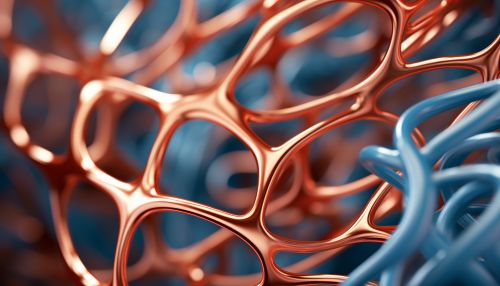Proteins
Introduction
Proteins are large, complex molecules that play many critical roles in the body. They do most of the work in cells and are required for the structure, function, and regulation of the body's tissues and organs. Proteins are made up of hundreds or thousands of smaller units called amino acids, which are attached to one another in long chains. There are 20 types of amino acids that can be combined to make a protein. The sequence of amino acids determines each protein's unique 3-dimensional structure and its specific function.


Structure of Proteins
Proteins are made from a set of 20 amino acids, which are linked together in varying sequences to form polypeptides. Each protein has its own unique sequence of amino acids. This sequence is determined by the gene that encodes the protein. The chemical properties of the amino acids of the protein determine the folded structure of the protein. The protein's structure is critical to its function.
Primary Structure
The primary structure of a protein is the sequence of amino acids that make up the polypeptide chain. The primary structure is formed by covalent peptide bonds, which are made during the process of protein synthesis.
Secondary Structure
The secondary structure of a protein refers to the folding of the polypeptide chain into alpha helices and beta sheets. These structures are held together by hydrogen bonds. The alpha helix is a right-handed coiled strand, while the beta sheet is formed by linking two or more beta strands together.
Tertiary Structure
The tertiary structure of a protein is the full three-dimensional structure of the arrangements of atoms found within the polypeptide chain, this structure is the final geometric shape that protein assume and would be the conformation found in the native state.
Quaternary Structure
The quaternary structure of a protein refers to the structure of a protein macromolecule formed by interactions between multiple polypeptide chains. Each polypeptide chain is referred to as a subunit. Proteins with quaternary structure may consist of more than one of the same type of protein subunit. They may also be composed of different subunits.
Functions of Proteins
Proteins perform a vast array of functions within organisms, including catalysing metabolic reactions, DNA replication, responding to stimuli, providing structure to cells and organisms, and transporting molecules from one location to another.
Enzymes
Proteins are also powerful enzymes that drive chemical reactions within cells. Some proteins are enzymes, which can catalyse all sorts of reactions, and RNA - a close relative of DNA - also forms complex structures that can act as enzymes.
Structural Proteins
Structural proteins confer stiffness and rigidity to otherwise-fluid biological components. Most structural proteins are fibrous proteins; for example, collagen and elastin are critical components of connective tissue such as cartilage, and keratin is found in hard or filamentous structures such as hair, nails, feathers, hooves, and some animal shells.
Transport Proteins
Transport proteins are proteins that transport substances from one place to another. For example, the protein hemoglobin transports oxygen from the lungs to other parts of the body.
Motor Proteins
Motor proteins are proteins that are able to move along the surface of a suitable substrate. They are powered by the hydrolysis of ATP and convert chemical energy into mechanical work.
Signal Proteins
Signal proteins are proteins that transmit signals to coordinate biological processes between different cells, tissues, and organs.
Receptor Proteins
Receptor proteins are proteins that receive and respond to molecular signals from the body and the environment.
Protein Synthesis
Protein synthesis is the process by which proteins are produced, or synthesized, in living things according to "directions" given by DNA (deoxyribonucleic acid) and carried out by RNA (ribonucleic acid) and other proteins. As suggested earlier, this is an extraordinarily complex process that requires a great deal of precision.
Protein Folding
Protein folding is the process by which a protein structure assumes its functional shape or conformation. It is the physical process by which a polypeptide folds into its characteristic and functional three-dimensional structure from random coil.
Protein Denaturation
Protein denaturation is the loss of quaternary structure, tertiary structure and secondary structure in a protein. This process is often caused by external stress on the protein, such as solvents, inorganic salts, exposure to acids or bases, and by high temperature.
